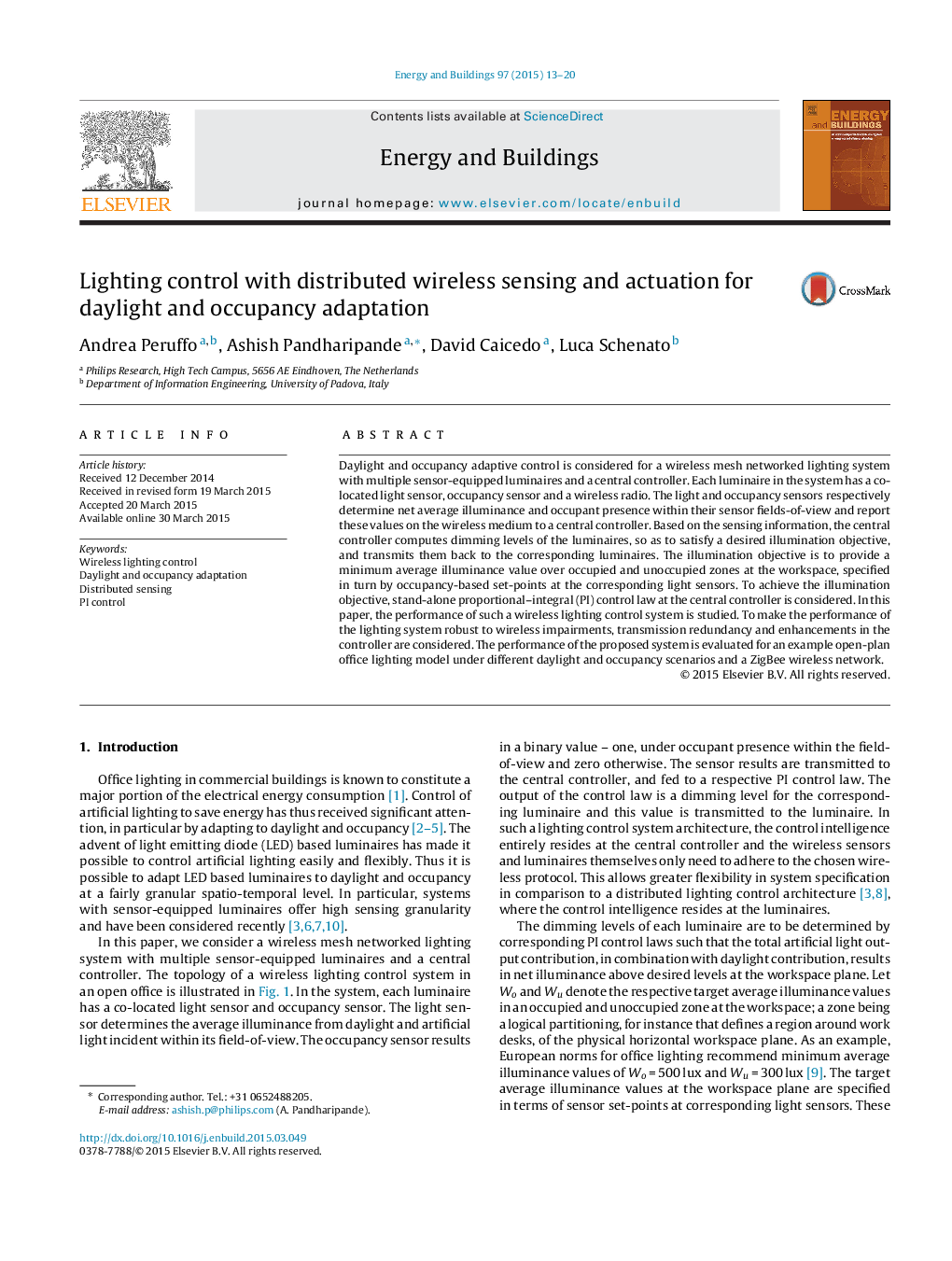| Article ID | Journal | Published Year | Pages | File Type |
|---|---|---|---|---|
| 262465 | Energy and Buildings | 2015 | 8 Pages |
•Assess wireless lighting control for daylight and occupancy adaptation.•Present proportional–integral control methods for wireless lighting systems.•Analyze control performance with open-office lighting model and ZigBee wireless mesh.
Daylight and occupancy adaptive control is considered for a wireless mesh networked lighting system with multiple sensor-equipped luminaires and a central controller. Each luminaire in the system has a co-located light sensor, occupancy sensor and a wireless radio. The light and occupancy sensors respectively determine net average illuminance and occupant presence within their sensor fields-of-view and report these values on the wireless medium to a central controller. Based on the sensing information, the central controller computes dimming levels of the luminaires, so as to satisfy a desired illumination objective, and transmits them back to the corresponding luminaires. The illumination objective is to provide a minimum average illuminance value over occupied and unoccupied zones at the workspace, specified in turn by occupancy-based set-points at the corresponding light sensors. To achieve the illumination objective, stand-alone proportional–integral (PI) control law at the central controller is considered. In this paper, the performance of such a wireless lighting control system is studied. To make the performance of the lighting system robust to wireless impairments, transmission redundancy and enhancements in the controller are considered. The performance of the proposed system is evaluated for an example open-plan office lighting model under different daylight and occupancy scenarios and a ZigBee wireless network.
